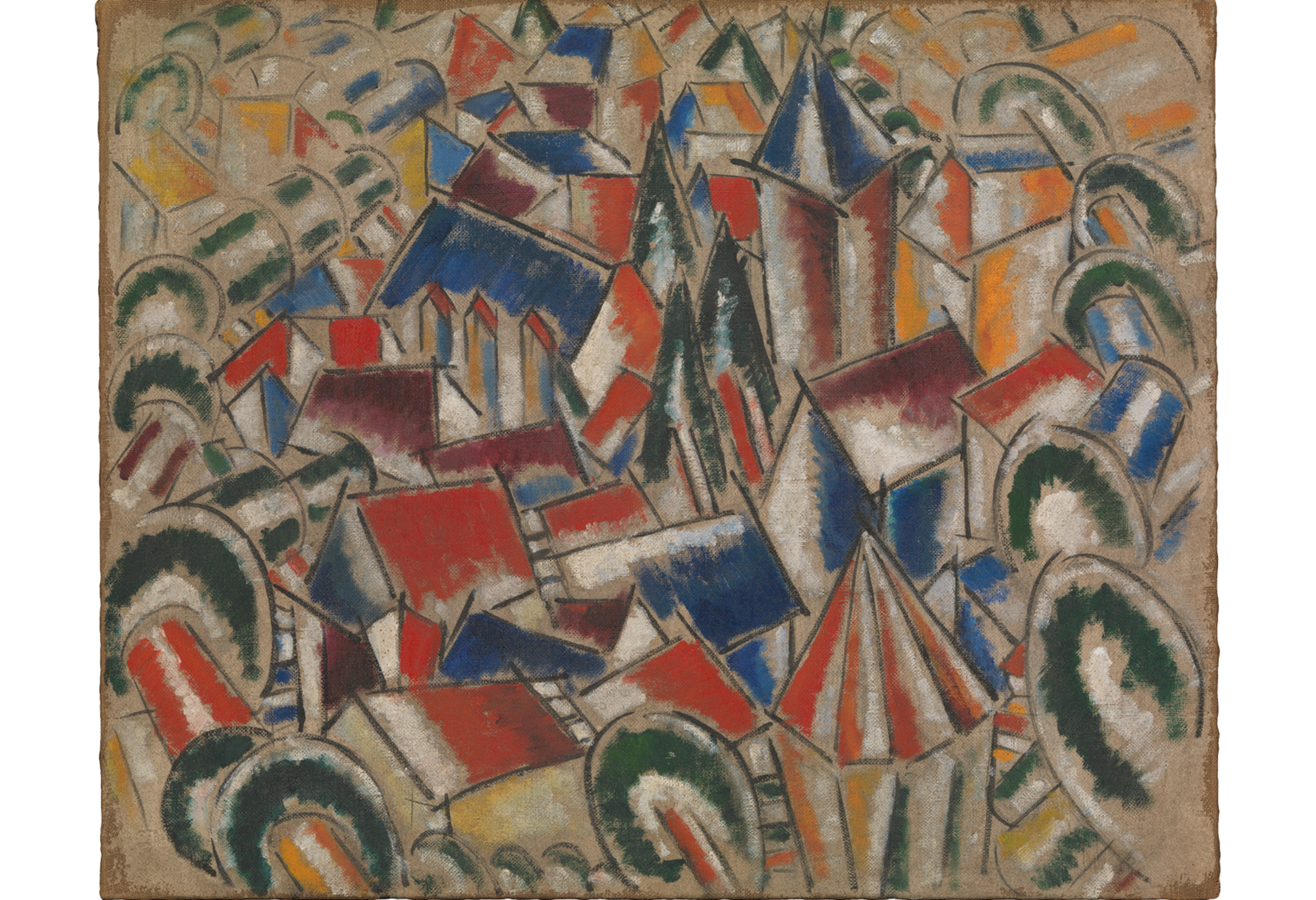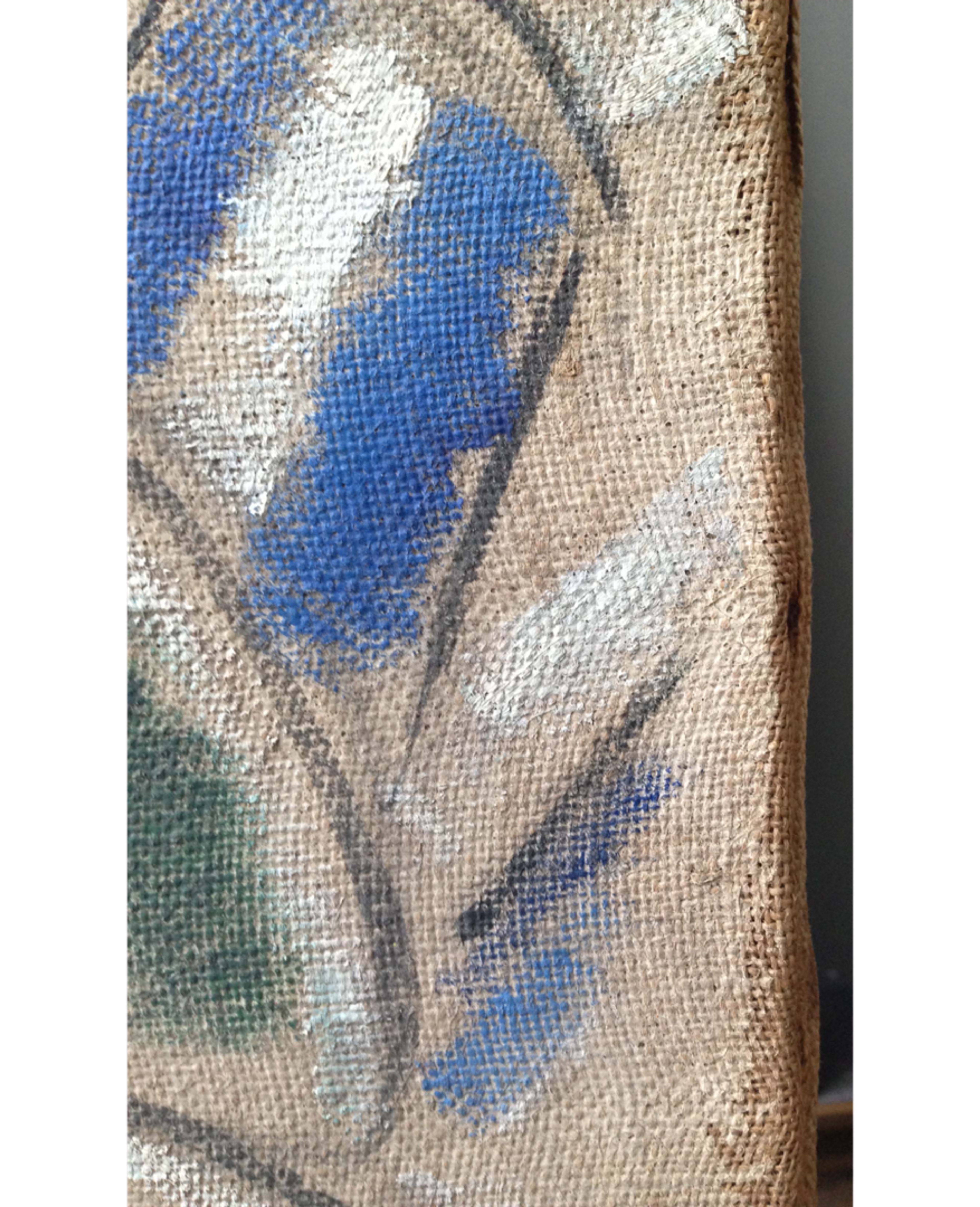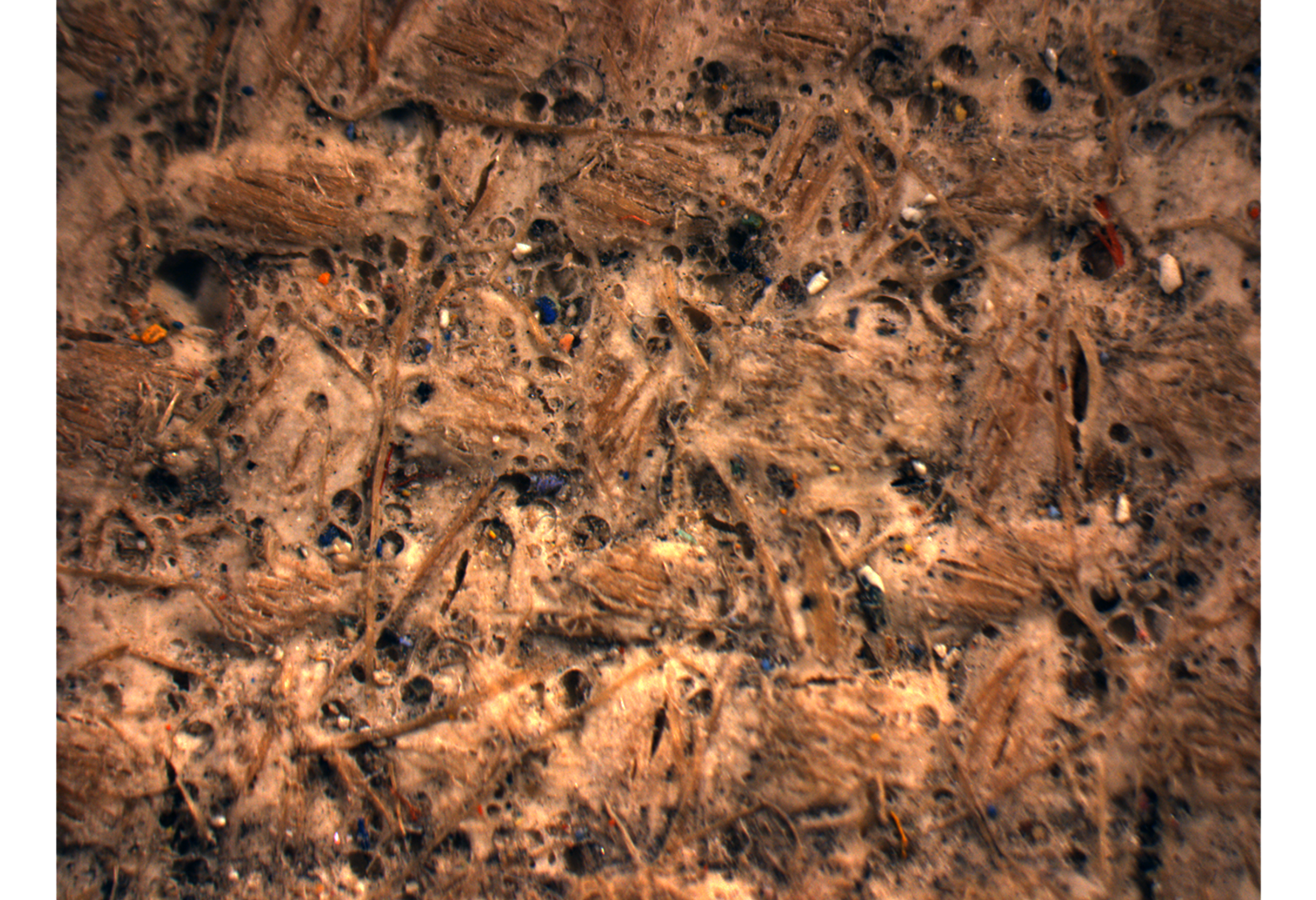
Fernand Léger (1881–1955), The Village, 1914. Oil on canvas, 31 1/2 x 39 1/2 in. (80 x 100.3 cm). The Metropolitan Museum of Art, Leonard A. Lauder Cubist Collection, Purchase, Leonard A. Lauder Gift, 2013 (2013.271) © 2016 Artists Rights Society (ARS), New York / ADAGP, Paris
Like many of Fernand Léger's early works, The Village was painted on coarse burlap canvas. Even though he may have chosen this material because it was inexpensive, Léger clearly appreciated its aesthetic possibilities. The brown, coarse open-weave fabric provides a prominent textural and tonal background for his colorful composition.
Before he began painting, Léger sealed the open weave of the burlap with a thin, porous, homemade, matte, grey-beige ground layer. He applied the ground sparingly, barely filling the interstices, covering only the area that he planned to paint and leaving exposed canvas on all sides of the composition (FIG. 1). The ground layer of The Village is primarily composed of a water-soluble glue mixed with chalk to which Léger added traces of the various pigments found in the final composition—blue, red, yellow, green, and orange—in order to achieve a neutral color background (FIG. 2). A similar idiosyncratic ground mixture has been identified in other paintings by Léger from the same period (for example, The Level Crossing, 1912; Fondation Beyeler, Basel).

FIG. 1. Detail of The Village, ground layer, lower right corner.

FIG. 2. Microphotograph of ground layer of The Village, showing porous texture and multicolor paint inclusions.
